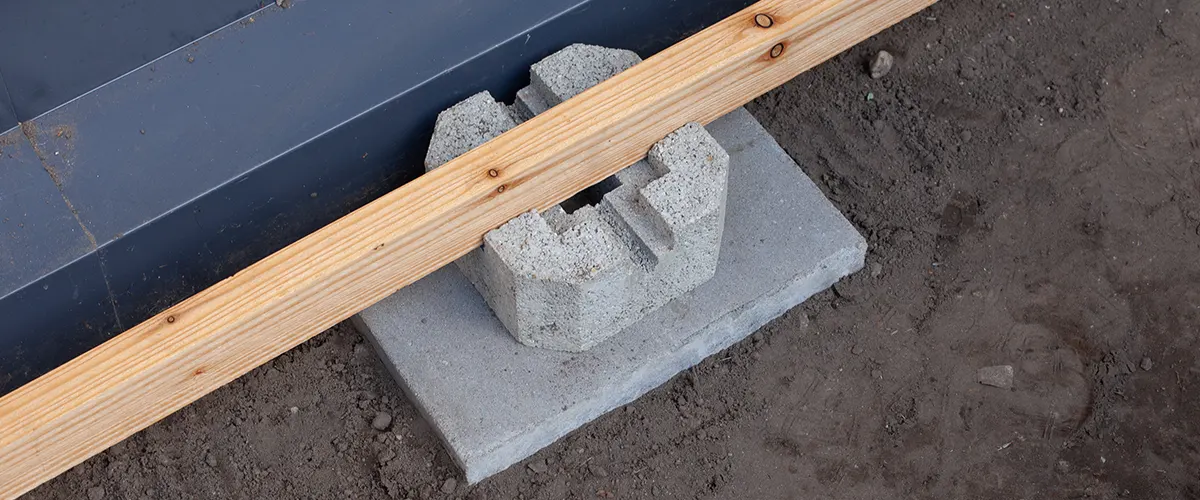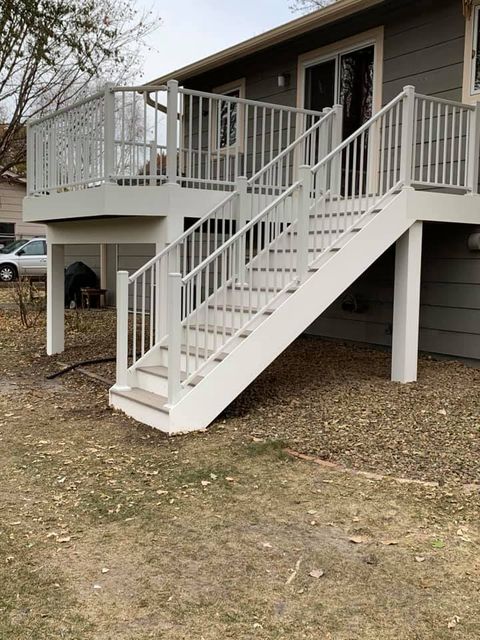From Idea to Concrete: The Important Role of Deck Footings in Sturdy and Safe Decks
Specialist Tips for Installing Deck Footings to Assistance Your Outdoor Room
When it comes to building a deck, one of the most critical elements to consider is the setup of correct grounds. These footings are the structure upon which your outdoor space will rest, giving stability and support for years to come. What specifically does it take to set up deck footings properly?
Significance of Appropriate Deck Footings
Correct deck footings are crucial for making sure the security and long life of your outside room. Without strong and effectively set up grounds, your deck might become unstable, leading to security risks and expensive repairs.

In addition to stability, appropriate deck footings also add to the durability of your outdoor space (Deck Footings). Grounds that are created and constructed to hold up against the components and soil conditions in your area will certainly help stop the deck from settling or shifting in time. By ensuring the footings are correctly sized and mounted, you can lessen the threat of damages to the deck framework, expanding its life expectancy and lowering the demand for pricey repair work or replacements

Selecting the Right Kind Of Grounds
When picking the appropriate kind of grounds for your deck, it is necessary to consider variables such as soil problems, regional structure codes, and the overall design of your exterior space. The kind of footing you select will play a critical function in guaranteeing the stability and long life of your deck.
One usual sort of ground is the concrete footing. Concrete grounds are suitable for the majority of soil problems and provide superb assistance for decks. They are commonly installed listed below the frost line to avoid moving and settling because of cold and thawing cycles. Another alternative is helical piers, which are optimal for areas with unsteady soil or high water tables. These piers are screwed into the ground and give solid support for the deck.
In many cases, you might need to use customized grounds, such as heap footings or deep structures, if you are building a big or multi-level deck. These grounds are designed to distribute the weight of the deck over a bigger location, ensuring stability and stopping sinking or settling.
Prior to choosing a kind of footing, it is important to consult neighborhood building ordinance and guidelines to make certain conformity. Furthermore, consider the design and meant use your outdoor space. Elements such as the dimension, shape, and load-bearing requirements of your deck will certainly affect the kind of footing that is most suitable.
Preparing the Ground for Footing Installation
To appropriately prepare the ground for footing installation, it is very important to evaluate the dirt conditions and take required actions to guarantee stability and longevity of the deck. The primary step is to dig deep into the area where the footings will be set up. The depth of the excavation will depend on the frost line in your area and the details needs of the deck design. It is vital to eliminate any kind of plants, rocks, or particles from the excavation to ensure a strong foundation.
Once the location has been dug deep into, the next step is to small the soil. read review This can be done making use of a plate compactor or by utilizing a hand tamper. Compacting the dirt assists to remove any spaces or air pockets, which can result in clearing up and instability in time.
After condensing the dirt, it is essential to lay a layer of crushed rock or smashed rock at the end of the excavation. This will certainly give drain and help to protect against water from pooling around the grounds, which can result in disintegration and instability.
Step-by-Step Guide to Installing Deck Footings
After correctly preparing the ground for footing installation, the next step is to start the process of mounting deck grounds. This step-by-step overview will provide you with a clear understanding of just how to mount deck grounds for your outside area.
Identify the location: Begin by marking the positions of the deck footings making use of risks and string. Make certain that the locations line up with the layout and format of your deck.
Dig the openings: Use an article hole digger or an auger to dig the holes for the footings. The deepness and size of the openings ought to be in accordance with local structure codes and the particular requirements of your deck layout.
Level the holes: Utilize a degree to ensure that the openings are dug to the proper depth and are degree reference with each various other. (Deck Footings)
Add gravel: Location a layer of gravel at the base of each hole to boost drain and protect against the wood from rotting.
Put the footings: Position the footings into the holes, making sure they are degree and plumb. Use a degree and a gauging tape to make certain accuracy.
Safeguard the grounds: Put concrete into the openings around the grounds, loading them to the top. Make use of an article degree to ensure the footings remain level as the concrete collections.
Enable time for treating: Allow the concrete treatment according to the manufacturer's directions prior to continuing with the deck building and construction.
Common Errors to Avoid Throughout Footing Installment
One essential facet to think about throughout the installation of deck grounds is staying clear of usual mistakes that can jeopardize the security and durability of your outside space. While deck grounds may seem like a uncomplicated and simple component of the construction process, forgeting specific elements can lead to pricey repair work and possible safety and security hazards down the line.

Additionally, ignoring to mount appropriate drainage measures can cause water to collect around the grounds, bring about rot, degeneration, and the eventual weakening of the deck's structure. Furthermore, making use of the wrong kind of footing product or falling short to properly secure the grounds can jeopardize their architectural stability.
To stay clear of these errors, it is vital to talk to an expert or adhere to market standards to guarantee appropriate footing setup. By doing so, you can make sure the stability and long life of your exterior area, giving a risk-free and pleasurable setting for several years ahead.
Verdict
In verdict, installing appropriate deck grounds is essential for the security and durability of your outside space. By choosing the best sort of footings and effectively preparing the ground, you can guarantee a solid structure for your deck. Following a detailed guide and preventing common errors throughout footing setup will better enhance the sturdiness and safety and security of your deck.
Correct deck grounds are vital for ensuring the stability and long life of your outside area. The footings serve as a link in between the deck and the ground, allowing the weight of the deck and its residents to be dispersed uniformly right into the soil.One usual type of footing is the concrete footing. Insert the footings: Position the grounds into the holes, making certain they are degree and plumb. Protect the grounds: Put concrete into the openings around the grounds, filling them to the top.